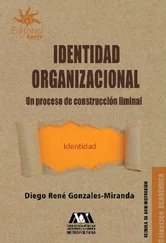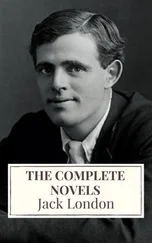Manoel Gonzales - London in 1731
Здесь есть возможность читать онлайн «Manoel Gonzales - London in 1731» — ознакомительный отрывок электронной книги совершенно бесплатно, а после прочтения отрывка купить полную версию. В некоторых случаях можно слушать аудио, скачать через торрент в формате fb2 и присутствует краткое содержание. Жанр: foreign_antique, foreign_prose, на английском языке. Описание произведения, (предисловие) а так же отзывы посетителей доступны на портале библиотеки ЛибКат.
- Название:London in 1731
- Автор:
- Жанр:
- Год:неизвестен
- ISBN:нет данных
- Рейтинг книги:5 / 5. Голосов: 1
-
Избранное:Добавить в избранное
- Отзывы:
-
Ваша оценка:
- 100
- 1
- 2
- 3
- 4
- 5
London in 1731: краткое содержание, описание и аннотация
Предлагаем к чтению аннотацию, описание, краткое содержание или предисловие (зависит от того, что написал сам автор книги «London in 1731»). Если вы не нашли необходимую информацию о книге — напишите в комментариях, мы постараемся отыскать её.
London in 1731 — читать онлайн ознакомительный отрывок
Ниже представлен текст книги, разбитый по страницам. Система сохранения места последней прочитанной страницы, позволяет с удобством читать онлайн бесплатно книгу «London in 1731», без необходимости каждый раз заново искать на чём Вы остановились. Поставьте закладку, и сможете в любой момент перейти на страницу, на которой закончили чтение.
Интервал:
Закладка:
1. Portsoken ward is situate without Aldgate, the most easterly ward belonging to the City; and extends from Aldgate eastward to the bars. The chief streets and places comprehended in it, are part of Whitechapel Street, the Minories, Houndsditch, and the west side of Petticoat Lane.
Whitechapel is a handsome broad street, by which we enter the town from the east. The south side, or great part of it, is taken up by butchers who deal in the wholesale way, selling whole carcases of veal, mutton, and lamb (which come chiefly out of Essex) to the town butchers. On the north side are a great many good inns, and several considerable tradesmen’s houses, who serve the east part of England with such goods and merchandise as London affords. On the south side is a great market for hay three times a week.
Tower ward extends along the Thames from the Tower on the east almost to Billingsgate on the west, and that part of the Tower itself which lies to the westward of the White Tower is held by some to be within this ward. The principal streets and places contained in it are Great Tower Street, part of Little Tower Street and Tower Hill, part of Thames Street, Mark Lane, Mincing Lane, Seething Lane, St. Olave Hart Street, Idle Lane, St. Dunstan’s Hill, Harp Lane, Water Lane, and Bear Lane, with the courts and alleys that fall into them.
Great Tower Hill lies on the outside of the Tower Ditch towards the north-west.
Upon this hill is a scaffold erected, at the charge of the City, for the execution of noble offenders imprisoned in the Tower (after sentence passed upon them).
The names of the quays or wharves lying on the Thames side in this ward between the Tower and Billingsgate, are Brewer’s Quay, Chester Quay, Galley Quay, Wool Quay, Porter’s Quay, Custom-House Quay, Great Bear Quay, Little Bear Quay, Wigging’s Quay, Ralph’s Quay, Little Dice Quay, Great Dice Quay, and Smart’s Quay, of which, next to the Custom-House Quay, Bear Quays are the most considerable, there being one of the greatest markets in England for wheat and other kinds of grain, brought hither by coasting vessels.
The public buildings in this ward (besides the western part of the Tower above-mentioned to be within the City) are the Custom House, Cloth-workers’ Hall, Bakers’ Hall, and the three parish churches of Allhallows Barking, St. Olave Hart Street, and St. Dunstan’s in the East.
The Custom House is situated on the north side of the Thames, between the Tower and Billingsgate, consisting of two floors, in the uppermost of which, in a wainscoted magnificent room, almost the whole length of the building, and fifteen feet in height, sit the commissioners of the customs, with their under officers and clerks. The length of this edifice is a hundred and eighty-nine feet, and the general breadth twenty-seven, but at the west end it is sixty feet broad. It is built of brick and stone, and covered with lead, being adorned with the upper and lower orders of architecture.
3. Aldgate, or Ealdgate Ward. The principal streets and places in it are Aldgate Street, Berry Street, part of St. Mary Axe, part of Leadenhall Street, part of Lime Street, Billiter Lane and Square, part of Mark Lane, Fenchurch Street, and Crutchedfriars.
The public buildings in this ward are the African House, the Navy Office, Bricklayers’ Hall, the churches of St. Catherine Creechurch, St. James’s, Duke’s Place, St. Andrew Undershaft, St. Catherine Coleman, and the Jews’ Synagogues.
The Royal African House is situated on the south side of Leadenhall Street, near the east end of it. Here the affairs of the company are transacted; but the house has nothing in it that merits a particular description.
The Navy Office is situated on the south side of Crutchedfriars, near Tower Hill, being a large, well-built pile of buildings, and the offices for every branch of business relating to the navy admirably well disposed.
The Jews’ synagogues are in Duke’s Place, where, and in that neighbourhood, many of that religion inhabit. The synagogue stands east and West, as Christian churches usually do: the great door is on the west, within which is a long desk upon an ascent, raised above the floor, from whence the law is read. The east part of the synagogue also is railed in, and the places where the women sit enclosed with lattices; the men sit on benches with backs to them, running east and west; and there are abundance of fine branches for candles, besides lamps, especially in that belonging to the Portuguese.
4. Lime Street Ward. The principal streets and places in it are part of Leadenhall Street, and Leadenhall Market, part of Lime Street, and part of St. Mary Axe.
Leadenhall Market, the finest shambles in Europe, lies between Leadenhall Street and Fenchurch Street. Of the three courts or yards which it consists of, the first is that at the north-east corner of Gracechurch Street, and opens into Leadenhall Street. This court or yard contains in length from north to south 164 feet, and in breadth from east to west eighty feet: within this court or yard, round about the same, are about 100 standing stalls for butchers, for the selling of beef only, and therefore this court is called the beef market. These stalls are either under warehouses, or sheltered from the weather by roofs over them. This yard is on Tuesdays a market for leather, to which the tanners resort; on Thursdays the waggons from Colchester, and other parts, come with baize, &c., and the fellmongers with their wool; and on Fridays it is a market for raw hides; on Saturdays, for beef and other provisions.
The second market yard is called the Greenyard, as being once a green plot of ground; afterwards it was the City’s storeyard for materials for building and the like; but now a market only for veal, mutton, lamb, &c. This yard is 170 feet in length from east to west, and ninety feet broad from north to south; it hath in it 140 stalls for the butchers, all covered over. In the middle of this Greenyard market from north to south is a row of shops, with rooms over them, for fishmongers: and on the south side and west end are houses and shops also for fishmongers. Towards the east end of this yard is erected a fair market-house, standing upon columns, with vaults underneath, and rooms above, with a bell tower, and a clock, and under it are butchers’ stalls. The tenements round about this yard are for the most part inhabited by cooks and victuallers; and in the passages leading out of the streets into this market are fishmongers, poulterers, cheesemongers, and other traders in provisions.
The third market belonging to Leadenhall is called the Herb Market, for that herbs, roots, fruits, &c., are only there sold. This market is about 140 feet square; the west, east, and north sides had walks round them, covered over for shelter, and standing upon columns; in which walks there were twenty-eight stalls for gardeners, with cellars under them.
The public buildings in this ward are Leadenhall, the East India House, Pewterers’ Hall, and Fletchers’ Hall.
Leadenhall is situated on the south side of Leadenhall Street. It is a large stone fabric, consisting of three large courts or yards, as has been observed already; part of it is at present a warehouse, in the occupation of the East India Company, where the finest calicoes, and other curiosities of the Eastern part of the world, are reposited; another part of it is for Colchester baize, and is open every Thursday and Friday. Here was also anciently a chapel, and a fraternity of sixty priests constituted to celebrate Divine Service every day to the market people; but was dissolved with other religious societies at the Reformation.
On the south side of Leadenhall Street also, and a little to the eastward of Leadenhall, stands the East India House, lately magnificently built, with a stone front to the street; but the front being very narrow, does not make an appearance answerable to the grandeur of the house within, which stands upon a great deal of ground, the offices and storehouses admirably well contrived, and the public hall and the committee room scarce inferior to anything of the like nature in the City.
Читать дальшеИнтервал:
Закладка:
Похожие книги на «London in 1731»
Представляем Вашему вниманию похожие книги на «London in 1731» списком для выбора. Мы отобрали схожую по названию и смыслу литературу в надежде предоставить читателям больше вариантов отыскать новые, интересные, ещё непрочитанные произведения.
Обсуждение, отзывы о книге «London in 1731» и просто собственные мнения читателей. Оставьте ваши комментарии, напишите, что Вы думаете о произведении, его смысле или главных героях. Укажите что конкретно понравилось, а что нет, и почему Вы так считаете.












